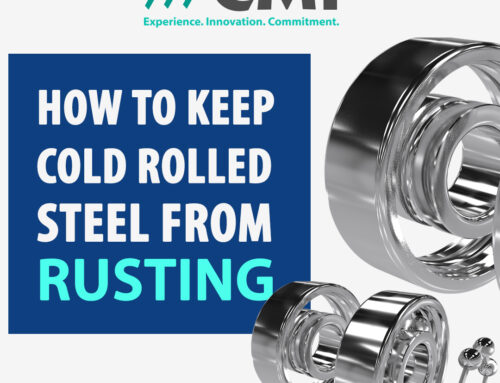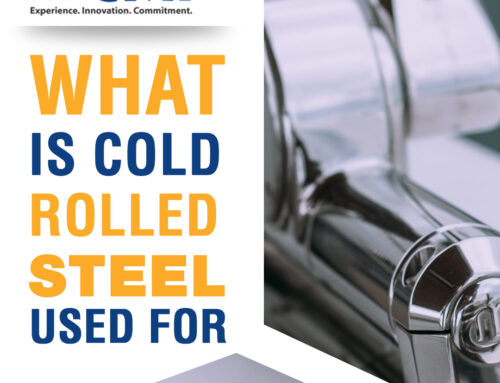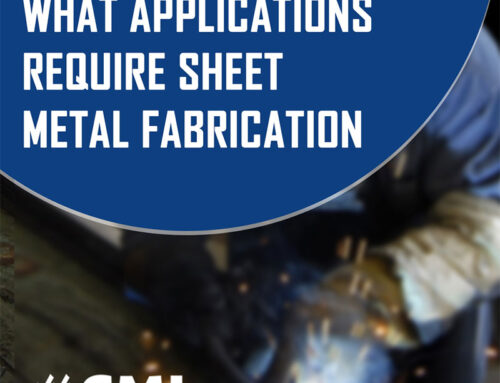What is Metal Fabrication
You are looking at the result of custom metal fabrication every time you get in your car, pick up the phone, handle a tool or turn on an electronic appliance.
Metal fabrication processes are vital to our economy. In the absence of it, our electrical systems couldn’t function, nor could we make the components that keep our houses, kitchens, businesses, computers, Metal detecting and vehicles running. Bolts and screws are examples of fabricated metal products, such as cutlery, pipe fittings, car parts, hand tools, and hand tool sets. It can be challenging for many of us to comprehend what precision metal fabrication involves and how it impacts many aspects of our lives.
Questions about metal fabrication
We need to answer the key question before we dig deeper into the details of metal fabrication: what is it?
Sheet metal and other flat metals are manufactured to conform to specific shapes using metal fabrication technology. It begins with a sheet of metal that is less than a quarter-inch thick. The metal is sufficiently pliable at this thickness to assume different shapes. This metal is used to shape the sheet into the desired form. The sheet is cut, stamped, shaped, folded, and welded. Furthermore, custom fabrication can be defined as creating new custom parts by combining these processes in new ways.
A skilled metal fabricator performs all the work – cutting and manipulating metal with a surgeon’s precision to achieve the desired shape. Manufacturers or specialized fabrication shops often employ these fabricators. They provide specialized fabrication services for the medical and IT industries, as well as general fabrication services.
Raw material for making stainless steel pipe includes plates, bars, rods, billets, ingots, blooms, slabs, forgings, and scrap.
The process of metal fabrication may require the addition of additional parts, including, but not limited to:
- Metal plating
- Expansion of metal
- Layout metal
- Welding wire
- Equipment
- Fixtures
- Castings
The types of components and processes used will inevitably vary based on the job. It begins with collecting assorted metals and transforms them into the complex, tight-fitting structures that we see in everyday life.

Metal Fabrication: A History
As evidenced by the copper pendant archeologists found in northern Iraq, dating back to about 9,000 BCE, humans have been mining and machining metal for the past ten millennia. Sheet metal was in much higher demand than before during the Industrial Revolution, when fabrication shops became popular.
Manufacturers were able to apply unprecedented pressures to metals with the invention of the hydraulic press.
A large scale of metal fabrication was necessary to construct railways, telegraph lines, weapons, tools, printing presses, and other implements that have played an integral role in our history. Today, machine shops provided these advances by making joints, cutting, bending, and forming operations. Another important part of fabrication, riveting, has been made much easier and more efficient by the advent of compressed air.
The use of metal fabrication in our daily lives has increased even further with the advent of the 20th century. Our industry consists of a wide range of machining operations ranging from small, family-run operations to large manufacturing plants containing thousands of employees. Now, Many companies accept everything from simple sketches to complex 3D models so that the finished product can be designed and produced effectively.

Fabrication of metals using technology:
Although metal fabrication practices and technology have evolved, art has existed in one form or another for millennia. Metal fabrication has been around for centuries, but some innovations have revolutionized how metal products are manufactured today. Modern metal fabrication technology includes the following types of technology:
CAD software:
Metal fabrication projects are designed using CAD software. Engineers use design software to develop designs that fabrication companies in the fabrication process can then use. Software such as this allows for quick updates and design changes, and the creation of 3D models. For machines to be programmed, CAD software also facilitates translation to programming languages. It has made fine-tuning parts much easier, and engineers can get important details instantly, including information on weak points, with the help of computer-aided design.
Automation:
The fabrication process has been revolutionized by automation in recent years. With the advent of manufacturing machinery with programming capabilities, projects can be automatically completed according to specifications with little to no human intervention. It also improves accuracy and reproducibility due to round-the-clock availability. There are numerous automated tools available, including those used for cutting, welding, folding, and many types of machining.
Machinery:
As well as software, hardware is improving over time. Cutting thicker materials is made faster using laser technology. There are also increasing numbers of technologies available, such as plasma cutting and waterjet cutting. Several types of projects and materials can be cut with these methods.
Fabrication of different metals:
A wide range of metals and alloys are used to fabricate metal products. Some metals are often manufactured using sheet metals, while others begin as pipes, tubes, or bars.
In metal fabrication, the following types of metal are commonly used:
- Nickel
- Aluminum
- Steel
- Copper
- Tin
- Gold
- Magnesium
- Iron
- Silver
Typical stock metals include sheet metal, bare metal, rod metal, fittings, and wire metal. Depending on their intended use, pipe and tubes are also available for some metals, such as steel and aluminum. The value of precious metals, such as gold and silver, contributes to their availability in smaller forms, such as wires, sheets, and bars.
Most metals can also be fabricated, though different limitations apply based on their texture, flexibility, and thickness. Steel, for example, is rigid, so fabricating steel will require other processes and power than fabricating aluminum, which is more flexible. Contact a metal fabrication services specialist to learn more about the different techniques needed for different metals.

Benefits of Metal Fabrication Services:
Most companies are not equipped with the in-house machines and expertise necessary to perform metal fabrication in-house. In many cases, companies with metal fabrication needs can benefit significantly from outsourcing the work to a third party. With our quick turnaround times, timely deliveries, and precise installation, are a few benefits. Here are a few Benefits of Metal Fabrication Services:
Expertise:
Services in metal fabrication study the latest trends, technologies, and practices and devote themselves to their craft. As well as fabrication experts, they also employ a team of experienced project managers.
Consulting:
As a partner, an outsourced metal fabrication company can review custom project designs for manufacturing feasibility to help your company. An expert can help identify innovative design modifications and identify areas for improvement that can bring down manufacturing and material costs.
Resources:
Whether your project is large or small, you can count on metal fabrication services to do the job. Aside from investing in the latest technology, they ensure your project is working with the best techniques and tools available.
Excellent Quality:
Outsourced metal fabrication can provide your company with the expertise, consulting services, and technologies it needs to achieve maximum quality.
Accurate Quotes:
Your company won’t have to invest in costly equipment or hire a skilled workforce when outsourcing its custom metal fabrication projects. If you outsource your metal fabrication, you can avoid these costs and leverage the expertise and capabilities of your fabrication partners to maximize quality while reducing costs. Make sure that the company you choose is committed to adding the most value for the lowest cost.
Choose companies with good resources with extensive experience in your industry or a related field when choosing metal fabrication services. Also, focus on the quality of workmanship in the company and consider who brings ideas into reality.







You must be logged in to post a comment.